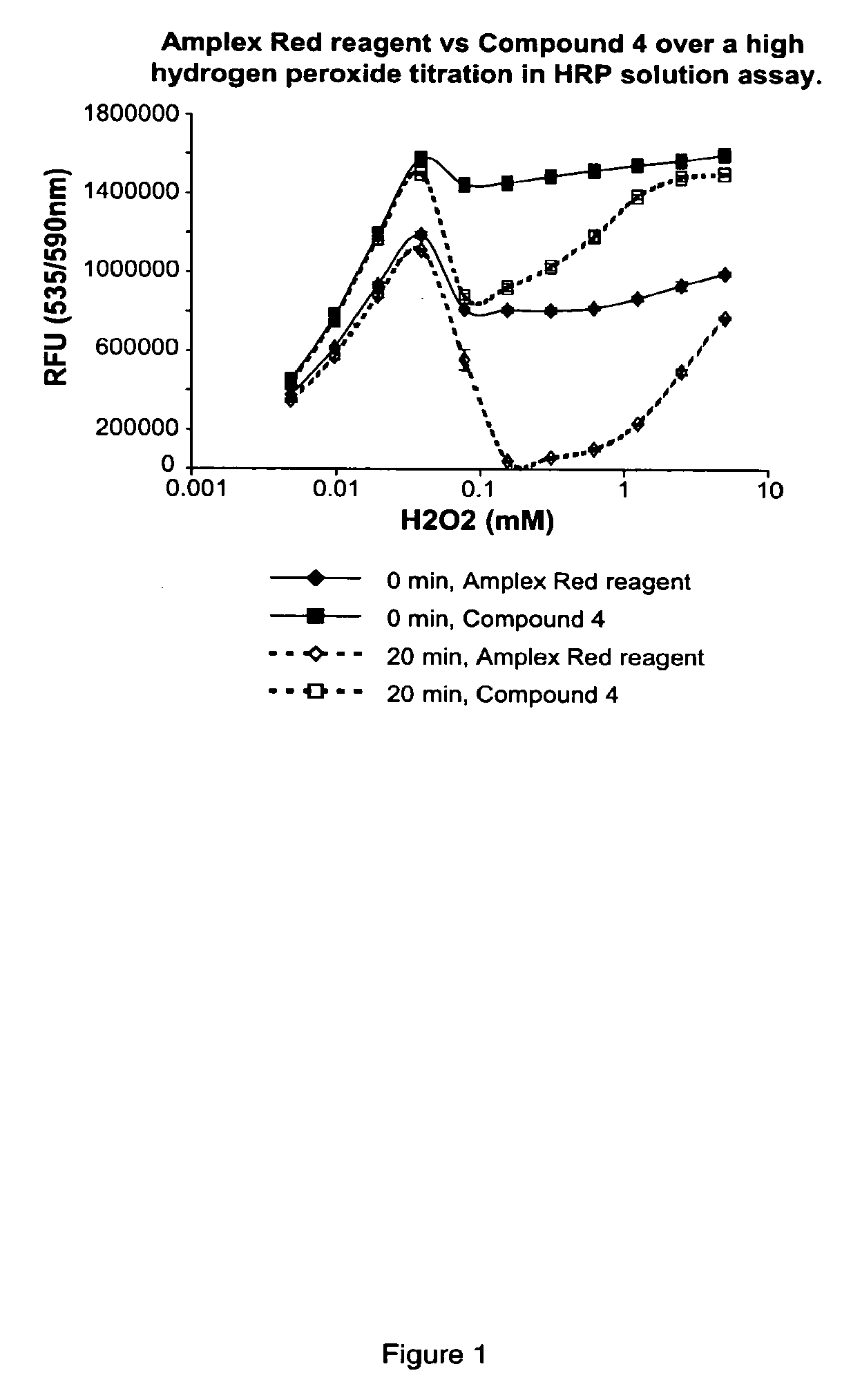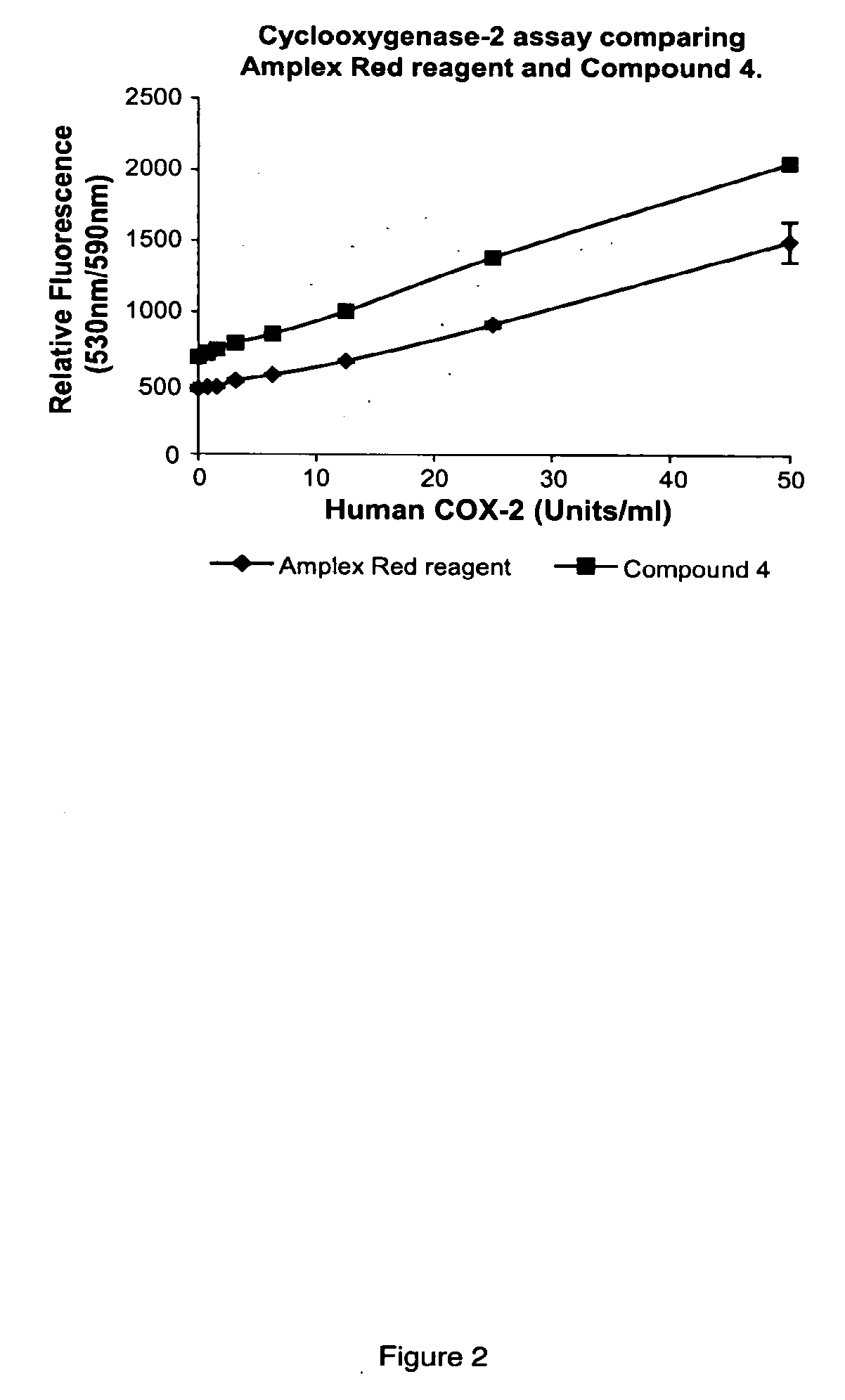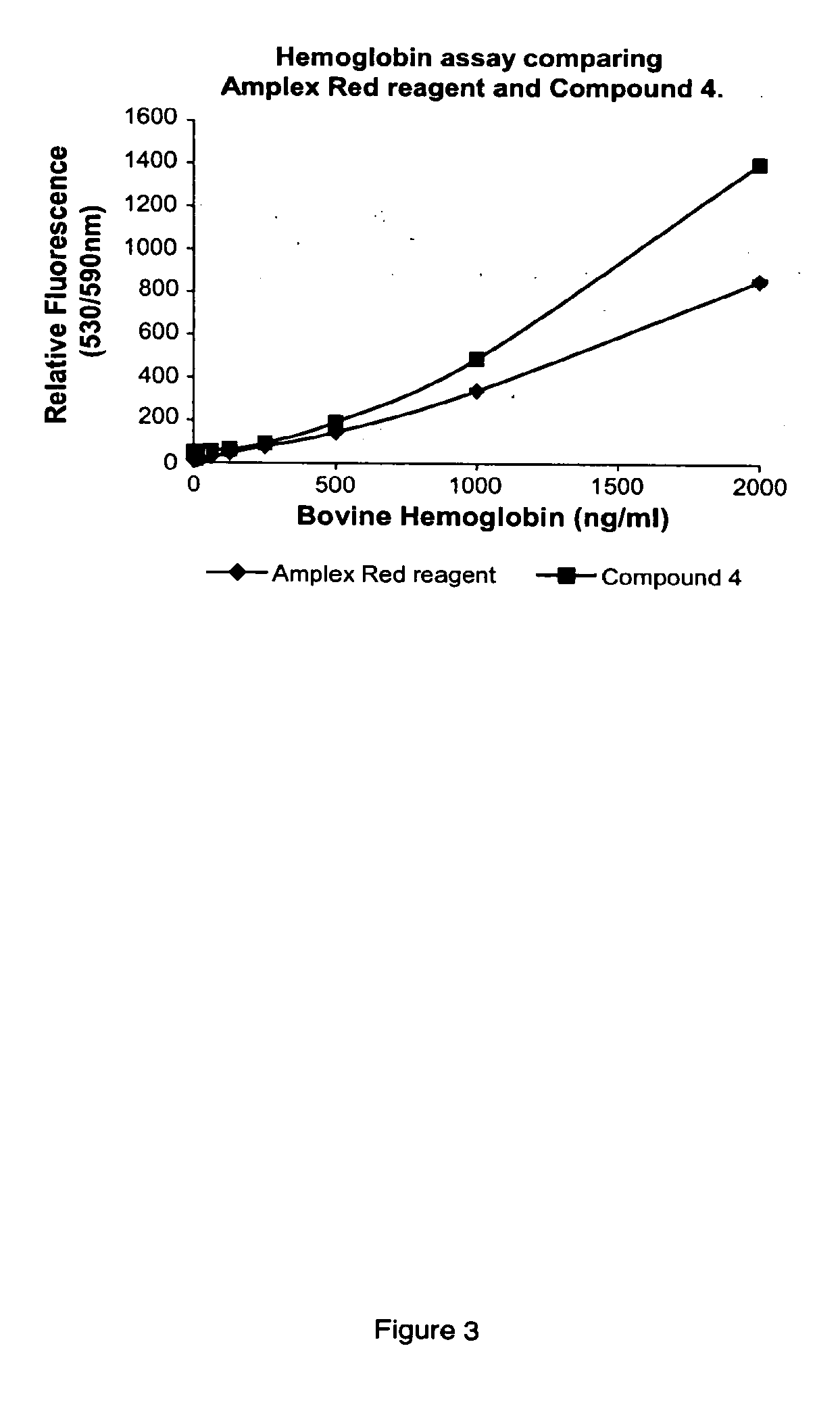Fluorinated resorufin compounds and their application
a fluorinated resorufin and compound technology, applied in the field of new products, can solve the problems of not being readily available in most laboratories and being usually more expensive, and achieve the effects of improving fluorescent properties, safe and reliable preparation, and enhancing the fluorescence intensity of the corresponding resorufin
- Summary
- Abstract
- Description
- Claims
- Application Information
AI Technical Summary
Benefits of technology
Problems solved by technology
Method used
Image
Examples
example 1
Preparation of Compound 1
[0235] To a solution of 4-fluororesorcinol (W.-C. Sun, et al., J. Org. Chem., 62 (1997) 6469) in ethanol (100 mL) at 0° C. was added a solution of KOH (3.0 g, 53.3 mmol) in H2O. Isoamyl nitrite (5.5 mL, 40.9 mmol) was then added dropwise and the combined solution was allowed to warm to room temperature and stirred for an additional 1 hr.
[0236] The solution was concentrated in vacuo to a thick oil. The oil was dissolved in 1 M HCl (200 mL), stirred for 1 hr and filtered to remove undissolved impurities. The filtrate was extracted with ethyl acetate (200 mL). The organic layer was washed with saturated NaCl (200 mL) and dried over anhydrous sodium sulfate. The filtrate was evaporated to a yellow-brown powder. The solid was stirred in dichloromethane for 48 hrs, filtered and dried to a constant weight to give 6-nitroso-4-fluororescorcinol (3.11 g, 84% yield), Compound 1. 1H NMR (DMSO-d6): 13.78 (1H, s, OH); 11.46 (1H, s, OH); 7.19 (1H, d, J=3 Hz); 5.76 (1H, d...
example 2
Preparation of Compound 2 (2,8-Difluoro-3,7-dihydroxyphenoxazine Triethylammonium salt)
[0237] A mixture of 1 (2.56 g, 16.3 mmol) and 4-fluororesorcinol (2.07 g, 16.3 mmol) in concentrated sulfuric acid (12 mL) was heated at 80° C. for 1 hr. The reaction was cooled to room temperature and added to saturated NaCl (150 mL) at 0° C. The mixture was stirred for 40 min and then filtered. The residual solids were dissolved in methanol (200 mL) and the solution was adjusted to pH 9 with triethylamine. The resultant solution was adsorbed on silica gel and concentrated to dryness in vacuo. The material was purified on a silica gel column using 80% chloroform / 19% methanol / 1% triethylamine as the eluent. Purified material was dried to a constant weight to give phenoxazine 2 (3.1 g, 70% yield). 1H NMR (DMSO-d6) 9.21 (1H, broad s); 7.40 (2H, d, J=3 Hz); 6.47 (2H, d, J=2); 3.10 (6H, q); 1.20 (9H, t).
example 3
Preparation of Compound 3 (2,8-Difluoro-3,7,10-triacetylphenoxazine)
[0238] To a mixture of tin (II) chloride (1.45 g, 7.6 mmol) and 2 (505 mg, 1.4 mmol) in triethylamine (1.6 mL) was added acetic anhydride (10 mL, 105 mmol). The mixture was heated to reflux for 20 min, cooled to room temperature and filtered. The filtrate was diluted with ethyl acetate (20 mL) and saturated bicarbonate solution (20 mL) and stirred at room temperature overnight. The organic layer was washed with 1 M HCl (2×100 mL) and then saturated NaCl (2×100 mL). The organic layer was dried over anhydrous sodium sulfate and evaporated to a brown oily semi-solid. Purification by silica gel chromatography with methylene chloride as eluent afforded 72 mg (14% yield) of pure material (3) after drying. 1H NMR (CDCl3): 7.34 (2H, d, J=3 Hz); 6.95 (2H, d, J=2 Hz,); 2.39 (3H, s); 2.37 (6H, s)
PUM
| Property | Measurement | Unit |
|---|---|---|
| Ri | aaaaa | aaaaa |
| fluorescent | aaaaa | aaaaa |
| wavelength | aaaaa | aaaaa |
Abstract
Description
Claims
Application Information
 Login to View More
Login to View More - R&D
- Intellectual Property
- Life Sciences
- Materials
- Tech Scout
- Unparalleled Data Quality
- Higher Quality Content
- 60% Fewer Hallucinations
Browse by: Latest US Patents, China's latest patents, Technical Efficacy Thesaurus, Application Domain, Technology Topic, Popular Technical Reports.
© 2025 PatSnap. All rights reserved.Legal|Privacy policy|Modern Slavery Act Transparency Statement|Sitemap|About US| Contact US: help@patsnap.com



